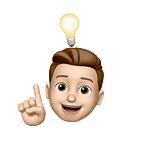UX Soft Skills
You can be an amazingly strong UX designer, but if you do not have key soft skills it can affect the way you communicate your work and yourself as a designer. At the core of all UX designers, we want to make the product or task the easiest and most enjoyable experience for the user. In order to accomplish that we have to use our first soft skill:
Empathy: To fully understand the user we have to interact with them to know what their motivations, frustrations, emotions, and journeys are. With this skill, we can accurately picture people’s needs without our own bias to get their truest experience. In UX design this is crucial, by understanding what our user needs shapes how we design products to become intuitive.
Creativity: Although this is more of an abstract skill, it is important to remember to use our imagination whenever possible. Imagine all of the insights and ideas you have gathered for the project and connect them in different ways, when something catches your attention quickly sketch it out or create a wireframe. By repeating this you are training yourself to become quicker and better at solving UX problems in the future.
Listening: To accurately understand what someone is saying, you have to actively listen and understand what the other person is saying in order to communicate effectively. Listening does not only mean hearing what they are saying, it also refers to paying attention to the other's use of language, tone of voice, body language, and emotions. This is crucial in the workplace and when working with clients, so start being aware of it when you are conversating with anyone to practice. Especially in working with a team, it is important to listen to everyone carefully so there are fewer misunderstandings which leads to fewer mistakes. Jon Torrey lays out a simple foundation of active listening in 3 steps: focus, understanding, and response. (https://medium.com/swlh/active-listening-can-save-your-career-1b797068e09a) Most importantly think of your response after you understand what the other person is saying. So often we start to think of what we are going to respond with before the other person finishes, this is a prime example of someone not listening effectively.
Leadership: Roles of leadership are frequently passed around in teams, so when it is your turn you should be ready to take responsibility and know-how to guide your team. It is important to set a goal and establish how you will want to get there utilizing your team's strengths to your advantage. To be a good leader you have to know your team in and out, who is good at what and what are they lacking in, to make correct judgments on the next steps. Effective leaders embrace collaboration and are open-minded to any solutions that come their way.
“Good leaders make people feel that they’re at the very heart of things, not at the periphery. Everyone feels that he or she makes a difference to the success of the organization. When that happens people feel centered and that gives their work meaning.” — Warren G. Bennis
